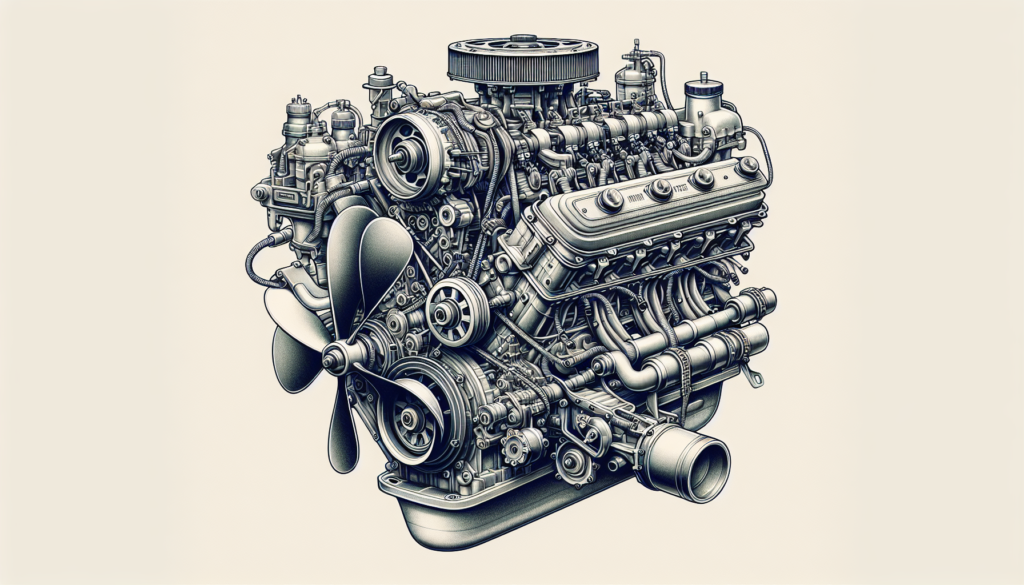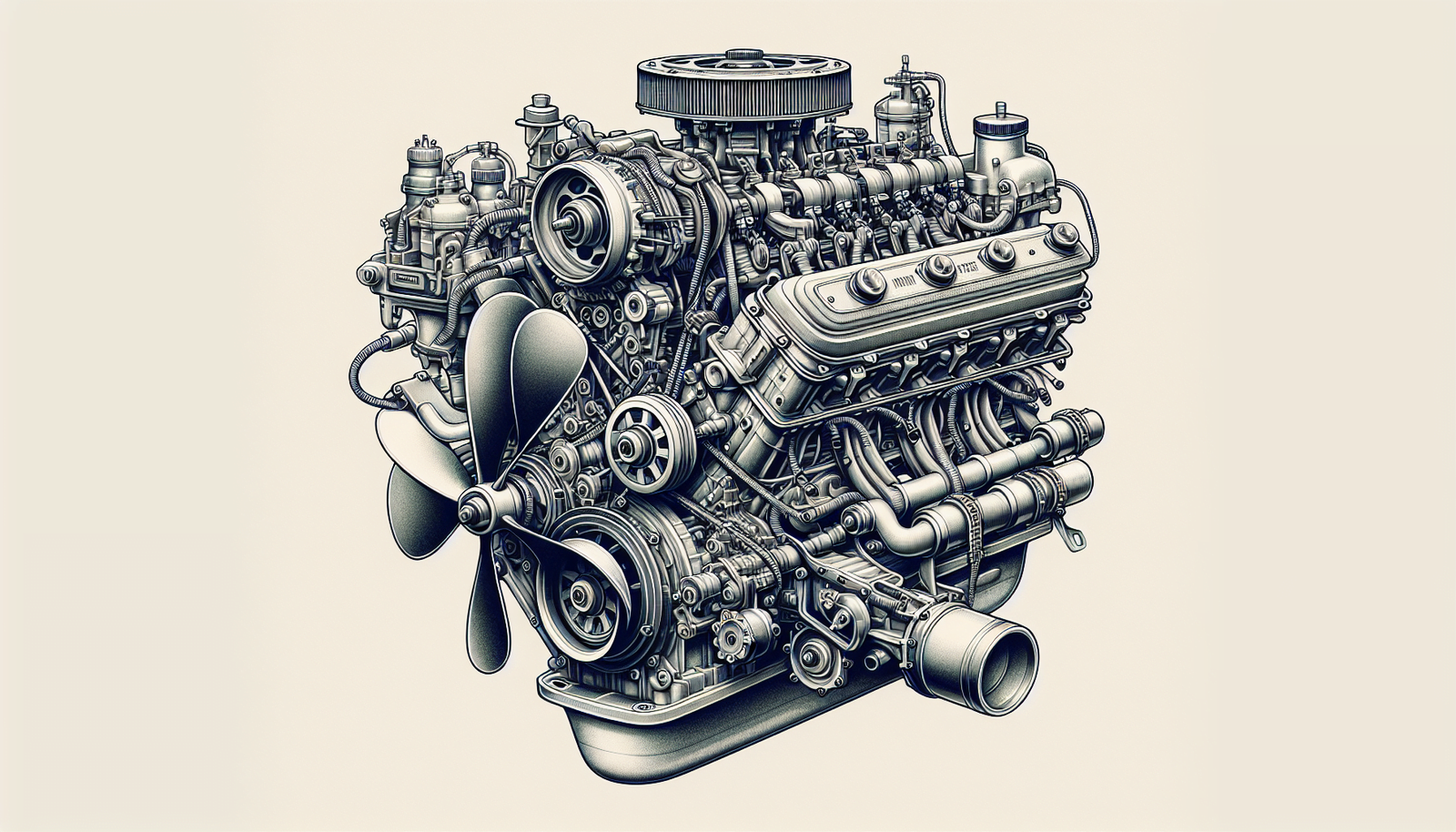You’re about to become the proud owner of a brand-new shiny boat engine, and that’s undeniably exciting. But before you sail off into the sunset, it’s crucial to test and inspect your newest investment. This article provides you with the essential checklist you’ll need to ensure your new boat engine is in tip-top condition. From leak checks to exhaust system inspections, we’ve got it all covered, ensuring your maritime adventures run as smoothly as possible.

Understanding Boat Engines
Boating is a leisure activity that involves not only navigating the waters but also understanding the performance of your vessel. A large part of this includes the workings of a boat engine. In this guide, we’ll discuss the essentials of boat engines and break down everything you need to know about their components and functionalities.
Types of boat engines
Like automobiles, boats also come in a variety of engine types, each with its unique set of characteristics. The common types of engines include outboard, inboard, and electric. Outboard engines are usually mounted on the exterior part of the boat and are easy to maintain. Inboard engines are located inside the boat and offer a higher level of power. Electric engines, on the other hand, are environmentally friendly but offer less speed.
Fundamental functionality of a boat engine
Boat engines work similar to car engines. They convert fuel into mechanical energy that drives the boat forward. While the principles are quite similar, the environment in which boats operate makes their engines incorporate marine-specific mechanisms. For example, a boat engine uses water from its surroundings to cool the engine, unlike your car which uses an air-cooling system.
Key components and their purposes
Understanding the basic key components of a boat engine can be helpful. The engine block is the base where all other components reside, while the crankshaft transforms the fuel’s energy into a force that moves the propeller. Pistons, connected to the crankshaft, compress fuel and air. The ignition system ignites this compressed mixture, resulting in a small explosion forces the pistons to move. Finally, the cooling system uses water to prevent engine overheating.
Systematic Overview of Boat Engine Inspection
Maintaining your boat engine is crucial for its performance and longevity. This involves regular inspections and taking preventive measures against possible damages and wear and tear.
Why regular inspection is necessary
Regular inspections help identify problems early before they escalate into major mechanical issues. These checks help keep your boat engine running at peak performance, ensuring your peace of mind when you’re out in the water. Plus, regular maintenance and systematic inspections could extend the lifespan of your engine.
Tools required for boat engine inspection test
Having the right tools for your inspection will help ensure you perform a thorough checkup. Essential tools include a wrench or socket set, screwdrivers, a spark plug tester, a volt-ohm meter for checking electrical circuits, a flashlight for better visibility, and a rag for cleanliness.
Safety guidelines
Safety should always be paramount when inspecting your boat engine. Always disconnect the battery before starting, avoid hot areas within the engine, and make sure the area is well-ventilated to prevent inhalation of dangerous fumes.
Inspecting the Boat Engine’s Exterior
The exterior inspection of the boat engine is the first step in your routine engine checks.
Checking for physical damages
Look for any signs of physical damage on the exterior of the boat engine. These might include cracks or dents on the engine casing, broken or missing parts, or any signs of severe wear and tear.
Inspection of fuel lines and attachments
It’s imperative to check all fuel lines, connections, and attachments. Look for signs of wear, fraying, or cracking rubber and replace any damaged elements immediately.
Engine paint condition and corrosion
The paint coat on your engine is not just for appearance but also protects your engine from corrosion. Check for blistering, peeling, or chipped paint which could expose the metal to moisture causing rust.

Checking the Engine’s Fluids
The boat engine’s fluids are critical for its operation and must be checked frequently to ensure they’re at the optimal level and in good condition.
Inspecting the engine oil
The engine oil should be clear and free of contaminants. Dark, cloudy, or dirty oil can signal engine problems and should be changed immediately.
Coolant level inspection
Checking the coolant level is vital for the engine’s cooling system. If the level is low, it might result in overheating, which can significantly damage your engine.
Checking the level of power-steering and brake fluids
Monitoring and maintaining the optimal levels of power-steering and brake fluids ensures smooth handling and steering of your boat.
Testing the Boat Engine’s Electrical System
The electrical system powers your boat’s ignition, lighting, and other essential systems.
Checking the battery and cables
Inspect the boat battery for any corrosion, loose wires, or damaged connectors. Establish that it is adequately charged to carry out its functions.
Reviewing the connection of the electrical wirings
Check the electrical cables for any signs of wear and tear that may lead to electrical faults. Inspect each wire’s insulation for any cracks, tears, or exposed wires.
Testing the engine’s electronic control unit
The Electronic Control Unit (ECU) is the heart of your boat’s engine computer system. Ensure it’s in perfect working condition by using diagnostic tools that illuminate any internal faults.
Verifying the Boat Engine’s Fuel System
The fuel system is vital, supplying the engine with the needed fuel to produce power.
Fuel quality analysis
Check to ensure the fuel is clean and free from moisture or any other contaminants that might impact the efficiency of the engine.
Inspection for fuel leaks
Keep an eye out for any signs of fuel leaks, usually indicated by the smell of gasoline or visible wet spots on the boat’s floor.
Fuel filter check
The fuel filter plays an important role in keeping contaminants from reaching your engine. Look out for any clogs or impurities within the filter.
Analyzing the Boat Engine’s Cooling System
The cooling system keeps your engine from overheating.
Coolant reservoir and radiator cap inspection
Check the coolant reservoir for any cracks or leaks and ensure the coolant level is sufficient. The radiator cap must also fit securely and be in good condition.
Testing temperature gauge and thermostat
The boat’s temperature gauge and thermostat should function properly to prevent any overheating.
Checking hoses and coolants for leaks
Inspect all hoses and coolants for any signs of leaks, cracks, or corrosion and replace them if necessary.
Checking the Boat Engine’s Propulsion System
The propulsion system is what pushes your boat through the water.
Verifying the condition of propellers
Check the propellers for any signs of physical damage, such as dents, cracks, or corrosions. Damaged propellers may cause vibrations that can harm your engine in the long run.
Testing the throttle and gear operation
Testing the throttle and gear operation ensures that you can navigate your boat without any issues.
Inspecting the shaft and seals
Keeping an eye on the shaft to confirm there are no bends or damages is vital. A seal inspection is also necessary to prevent water from getting into parts where it doesn’t belong.
Evaluating the Boat Engine’s Exhaust System
The boat engine’s exhaust system is responsible for discharging exhaust gases from the engine.
Inspecting the exhaust manifold
The exhaust manifold must be inspected for any cracks or leaks. An impaired manifold can lead to exhaust gases damaging other components of your engine.
Looking for signs of exhaust leaks
Keep an eye out for any signs of exhaust leaks by looking for black soot or listening for a high pitched whistle sound.
Performance test for exhaust system
Carry out a performance test on your exhaust system to confirm it is functioning efficiently. This will let you know if any improvements or changes need to be made.
Longterm Maintenance of your Boat Engine
Once you’re familiar with all the key components of your boat engine and their functions, the next step is long-time maintenance.
Setting a regular inspection schedule
Set a regular inspection schedule and stick to it. Regular check-ups will assist in spotting issues early and attending to them before they escalate into serious problems.
Understanding warranty and service history
Knowing your boat engine’s warranty and maintaining a record of its service history will help you manage future repairs and replacements.
Essential care tips for longevity
Remember to always use the right kind of fuel for your engine and don’t ignore small issues. Always keep your engine clean and ensure it is always properly lubricated. By doing so, you can significantly extend the lifespan of your boat engine and enjoy many more years of sailing.

